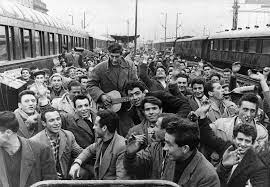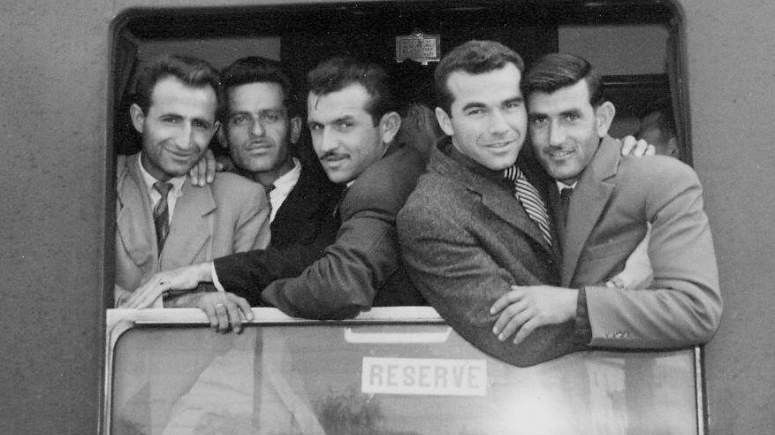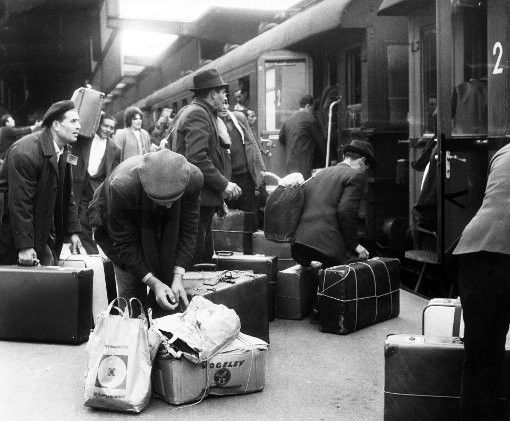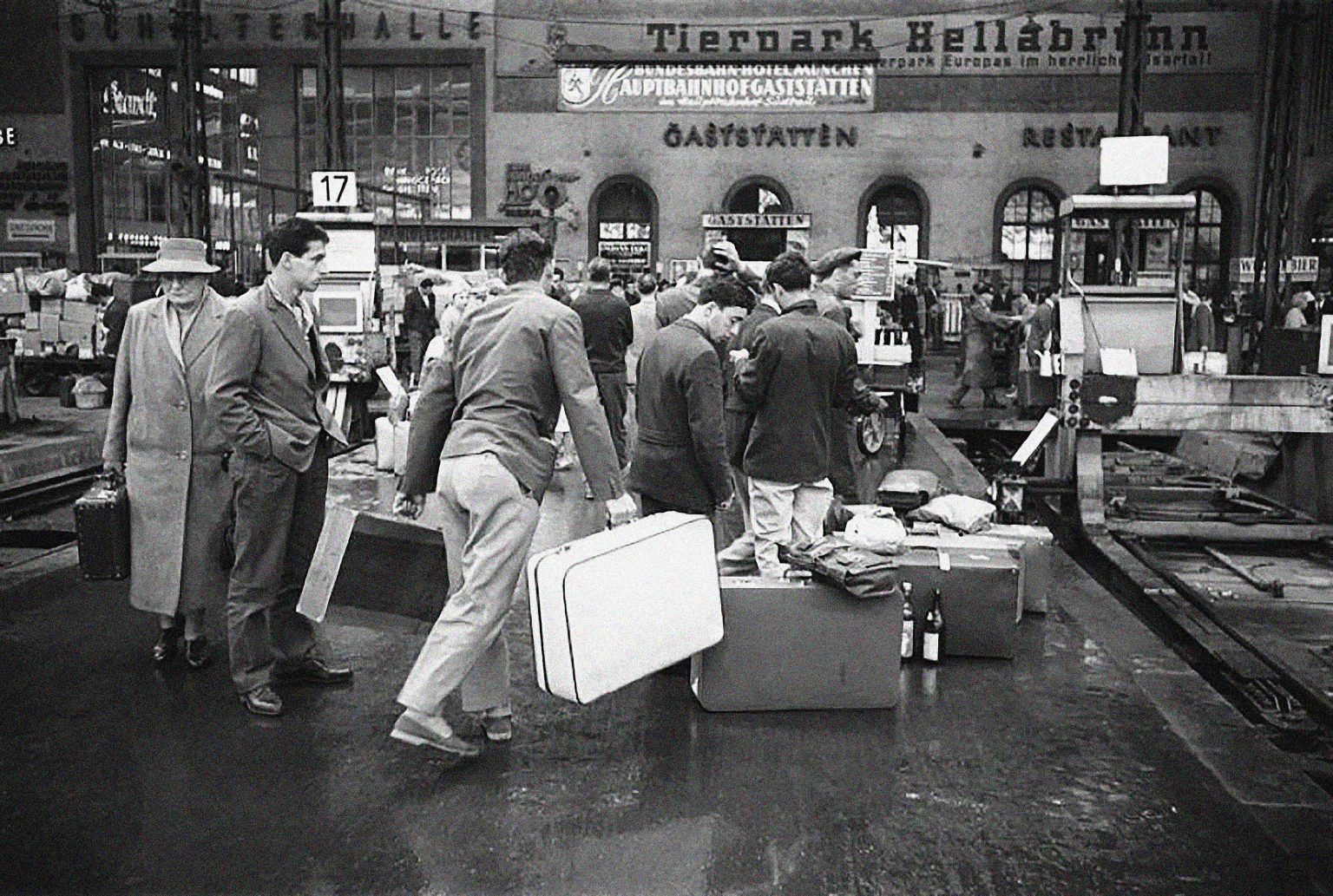After the war: Thessaly moves to Nea Ionia, Nea Ionia moves to Germany
Even though the industrial sector of Volos had offered employment both to the refugees of previous decades and these new, internal migrants, the de-industrialisation of the 1950s drove many of the city’s residents to migrate to Northern Europe, especially Germany.
Platform 11 of the Munich train station became a symbol of this migration route. It was the terminal station of the train Hellas Express, which made its first journey in 1963. It was the first train connection between Greece and the Federal Republic of Germany after the Second World War. This train service started operating just 3 years after the signing of the ‘Treaty for the Selection and Placement of Greek workers in German businesses’ and was actually designed to facilitate migration from Greece. Due to high demand, the public Greek train organisation (OSE) added another train to Germany, called Acropolis Express.
Sultana Chatzi from Grizano, in Trikala, boarded the Hellas Express in November 1964. She organised her migration journey through an employment agency along with 30 more young women from nearby villages. When she arrived at Platform 11 of the Munich train station at the age of 24, she had already signed an employment contract with Siemens. Christos and Evangelia Chardaloupa from Volos arrived at the same platform in 1962, followed by Christos’ brother, Theofilos, in 1965. Vangelis Moustanis from Nea Ionia disembarked on Platform 11 in 1964. In the 13 years between 1960 and 1973, when Germany suspended all bilateral migration agreements due to the oil crisis, 615,000 men and women migrated from Greece to Germany, where they built the economic miracle of postwar Germany alongside 1,5 million workers from Italy, Spain, Portugal, and Turkey. The main drivers behind this mass migration from Greece after the Second World War were the rise in unemployment and extreme poverty, post-civil war persecutions and the oppressive climate created by the Junta regime after 1967.
Fifty years later, from 2010 to 2020, approximately 467,000 men and women from Greece resettled in Germany to find work. There was no need for invitations, special documents, or medical exams anymore, but there was also no guaranteed employment or housing. In contrast with the collective contracts signed under state supervision in the 1960s, this was a new model of wholly individualized migration, where the migrant is the one solely responsible for organising the journey, finding work and securing housing. The migrating workforce was also different: the new migrants were specialised and highly educated when the migrants of the 1960s had been unskilled workers. However, despite the differences, the causes of this recent migration wave were similar: a sharp rise in unemployment and poverty rates, the adverse conditions caused by the implementation of the IMF memoranda, and the economic and political crisis in Greece.
Objects





